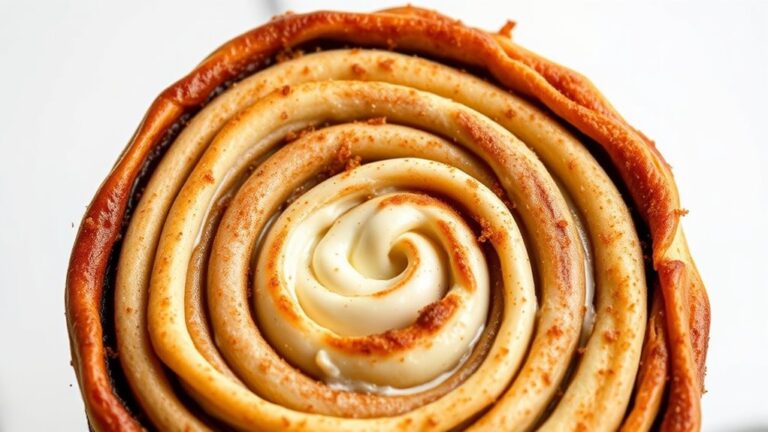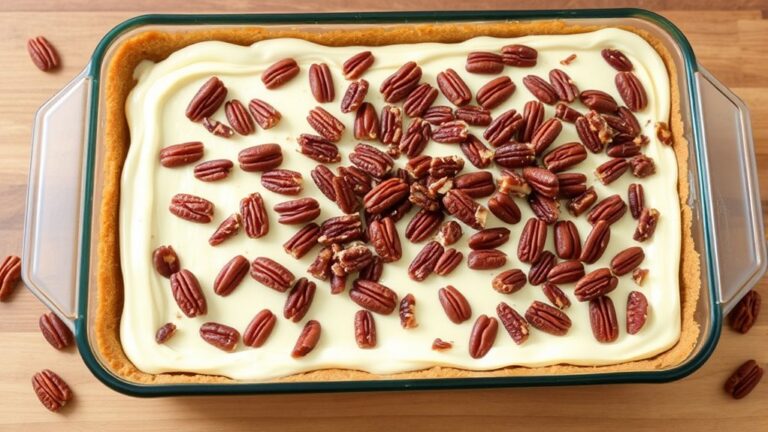Brown Sugar Carmel Pound Cake Recipe
Interestingly, you stumbled upon this Brown Sugar Caramel Pound Cake recipe just as you were craving something sweet and comforting. You'll want to pay close attention, because this Southern classic isn't just another dessert—it's a culinary journey that'll transform your kitchen into a haven of warmth and nostalgia. The secret? It's all in the technique, the careful balance of ingredients, and the love you'll pour into every step. Curious about how a simple pound cake can become an extraordinary experience? Let's uncover the magic together.
Recipe Highlights
- A classic Brown Sugar Caramel Pound Cake requires softened butter, brown sugar, eggs, flour, milk, vanilla extract, salt, and baking powder as primary ingredients.
- Cream butter and brown sugar for 5 minutes until light and fluffy, then gradually add eggs one at a time for a smooth batter consistency.
- Bake the cake in a greased bundt pan at 325°F for 1 to 1 hour and 15 minutes, ensuring a toothpick inserted comes out clean.
- Allow the cake to cool completely after baking to develop enhanced flavor, maintain structural integrity, and achieve the ideal tender, moist texture.
- Southern-style baking techniques emphasize patience during mixing, careful ingredient incorporation, and precise temperature control to create a rich, melt-in-your-mouth pound cake.
History
While pound cake traces its origins back to European baking traditions, the Brown Sugar Caramel Pound Cake represents a distinctly Southern American adaptation.
You'll find this dessert evolved from early European pound cake recipes brought by settlers, who transformed the dense, simple cake into a regional delicacy with unique flavor profiles.
The Southern version embraces brown sugar's deep, molasses-like characteristics, creating a more complex taste experience.
Bakers in the southeastern United States developed this recipe by incorporating local ingredients and culinary techniques, turning a basic European concept into a rich, caramel-infused masterpiece.
Generations of home cooks have refined the technique, passing down recipe variations that highlight the cake's rustic elegance and comforting sweetness, making it a beloved staple of Southern hospitality and home baking traditions.
Recipe
Brown Sugar Caramel Pound Cake is a Southern classic that elevates the traditional pound cake with rich, deep caramel notes from brown sugar. This decadent dessert transforms simple ingredients into an extraordinary treat that melts in your mouth and fills the kitchen with a warm, inviting aroma.
The key to this cake's success lies in its careful preparation and high-quality ingredients. By creaming the butter and brown sugar thoroughly and incorporating ingredients at room temperature, bakers can achieve a perfectly tender, moist cake with a beautifully caramelized exterior.
Ingredients:
- 2 cups packed brown sugar
- 1 cup unsalted butter, softened
- 4 large eggs
- 2 cups all-purpose flour
- 1 cup whole milk
- 1 teaspoon vanilla extract
- 1/2 teaspoon salt
- 1 teaspoon baking powder
Preheat the oven to 325°F and prepare a 10-inch bundt pan by thoroughly greasing every surface and crevice. Cream the softened butter and brown sugar together in a large mixing bowl, beating for approximately 5 minutes until the mixture becomes light and fluffy.
Add eggs one at a time, ensuring each is fully incorporated before adding the next. Gradually mix in the dry ingredients, alternating between flour and milk. Begin and end with flour, mixing just until combined to prevent overmixing.
Pour the batter into the prepared bundt pan, smoothing the top with a spatula. Bake for 1 hour to 1 hour and 15 minutes, or until a toothpick inserted into the center comes out clean.
For the most successful pound cake, ensure all ingredients are at room temperature before beginning. Allow the cake to cool in the pan for 10 minutes before carefully turning it out onto a wire rack.
To maintain maximum moisture and flavor, store the cake in an airtight container at room temperature and consume within 3 days of baking.
Cooking Steps
You'll start by creaming the softened butter and brown sugar together until the mixture becomes light and fluffy, which typically takes about 5 minutes of steady mixing.
Next, you'll gradually incorporate the eggs, adding them one at a time and beating well after each addition to ensure a smooth, well-integrated batter.
As you continue, you'll alternate adding flour and milk to the mixture, always beginning and ending with flour, which helps create a tender, evenly mixed pound cake that'll showcase the rich caramel notes of the brown sugar.
Step 1. Cream Butter, Sugar Together
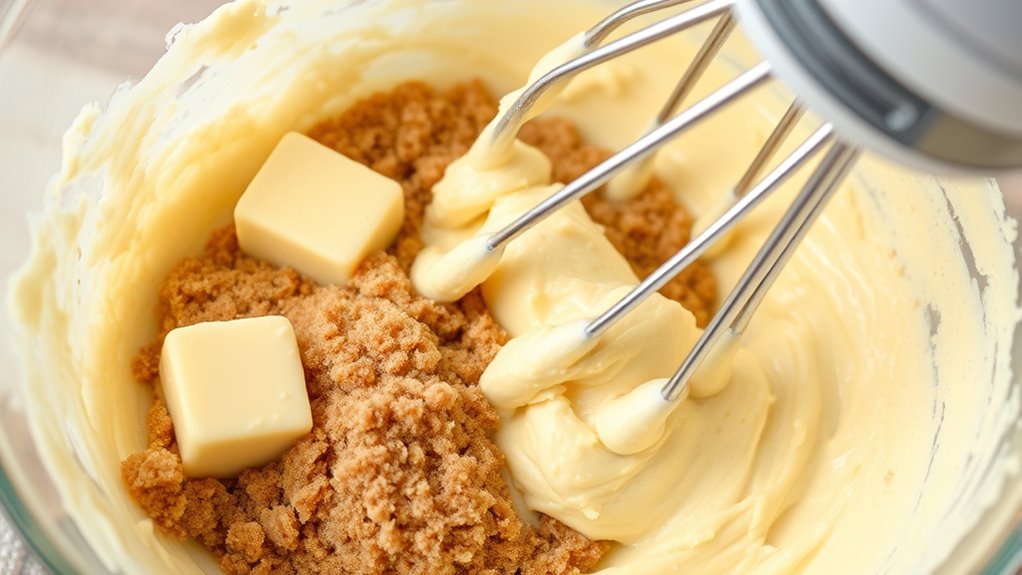
Grab your stand mixer or hand-held electric mixer and prepare to transform butter and brown sugar into a creamy, light foundation for your pound cake.
You'll want to start with softened, room-temperature butter—cold butter won't cream properly and can lead to a dense, uneven cake texture.
Key steps for perfect creaming:
- Use a mixer on medium-high speed
- Beat butter and brown sugar for 5 full minutes
- Watch for color lightening and volume increasing
- Scrape down mixer sides periodically
The goal is achieving a fluffy, pale mixture that looks almost whipped.
Soft peaks should form when you lift the beater, indicating you've incorporated enough air. This crucial step creates the cake's tender crumb and helps ensure even rising during baking.
Step 2. Add Eggs Gradually
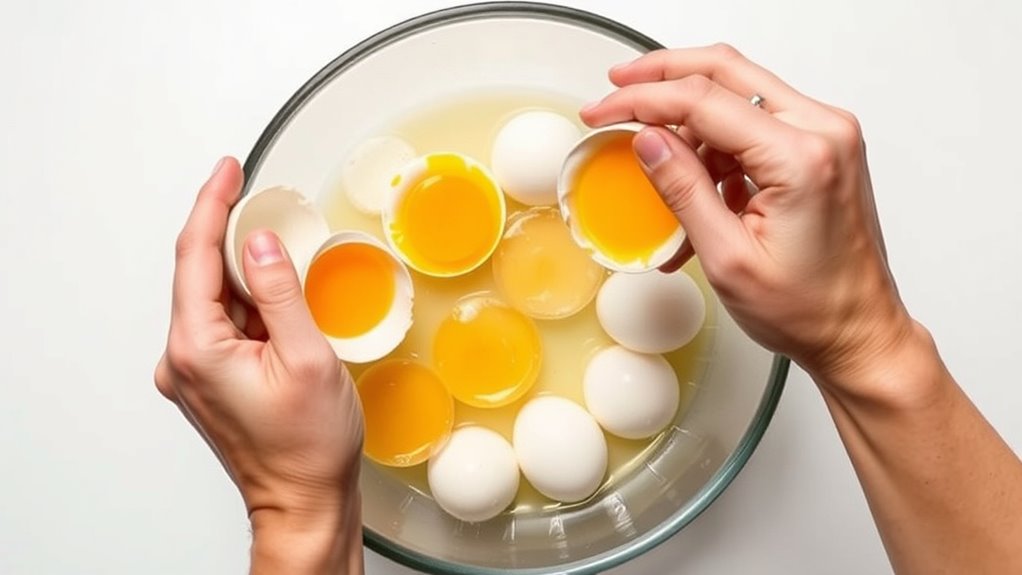
After creaming your butter and brown sugar to a light, fluffy consistency, it's time to incorporate eggs one at a time, which helps create a smooth, stable cake batter.
Crack each egg into the mixture separately, beating thoroughly after each addition. This gradual approach prevents the batter from separating and ensures even distribution:
- Add eggs at room temperature
- Beat for 30-45 seconds between each egg
- Scrape down bowl sides periodically
- Watch for a silky, homogeneous texture
Your goal is a uniform mixture where eggs integrate completely without curdling.
The slow incorporation allows air to be trapped, contributing to the cake's final tender crumb. Pay attention to the batter's changing consistency—it should look progressively smoother and more glossy with each egg added, creating the foundation for a beautifully textured pound cake.
Step 3. Alternate Flour and Milk
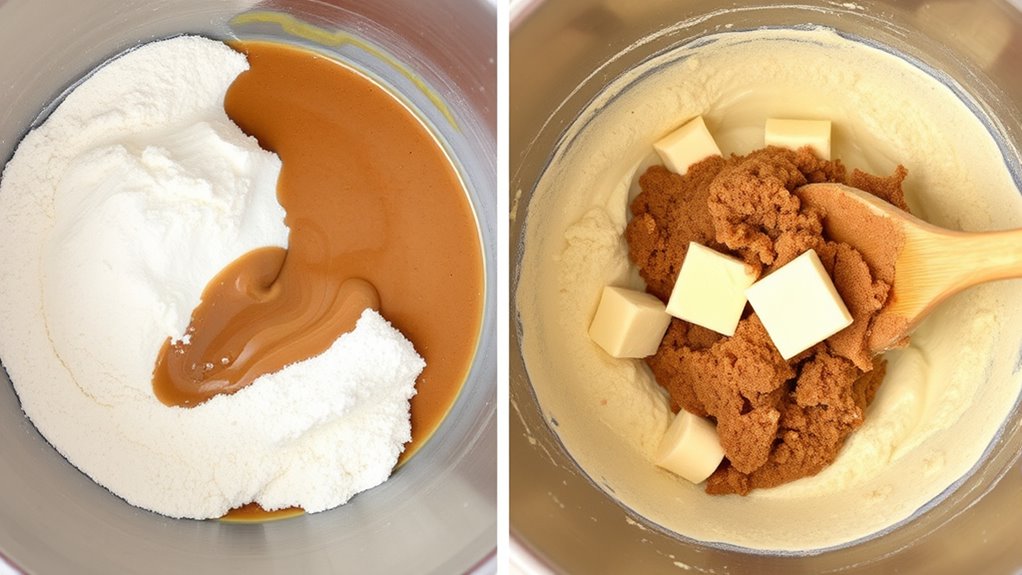
Once the eggs have been smoothly incorporated, creating a glossy batter, you'll focus on carefully combining flour and milk to complete your pound cake's foundation. Gradually alternating between flour and milk prevents overmixing and ensures a tender crumb.
Start by adding 1/3 of the flour, mixing until just combined, then pour in 1/2 the milk, stirring gently. Repeat this process:
- Add another 1/3 of flour
- Mix in remaining milk
- Finish with final 1/3 of flour
Stop mixing as soon as ingredients are incorporated, watching for these visual cues:
- No dry flour streaks remain
- Batter looks smooth and consistent
- Texture appears silky but not overworked
This technique guarantees a perfectly textured Brown Sugar Caramel Pound Cake with maximum moisture and delicate crumb structure.
Step 4. Pour Into Pan

Transform your caramel-infused batter into a baker's masterpiece by carefully transferring it to the prepared bundt pan. Use a rubber spatula to scrape every last bit of batter from the mixing bowl, ensuring maximum cake yield and flavor distribution.
Key pouring techniques:
- Hold the bowl close to the pan's rim
- Pour slowly and steadily
- Rotate the pan slightly for even coverage
- Tap the pan gently on the counter to release air bubbles
Spread the batter smoothly, maintaining an even surface that'll help your cake bake uniformly. The thick, golden-brown mixture should fill the bundt pan about 2/3 full, leaving room for rising during baking.
Gently smooth the top with your spatula, creating a professional-looking finish before sliding the pan into the preheated oven.
Step 5. Bake Until Toothpick Clean

Carefully slide your bundt pan into the preheated 325°F oven, positioning it on the center rack for even heat distribution. Watch the cake closely during baking, as precise timing is crucial for achieving the perfect texture.
Set your timer for 1 hour, but start checking for doneness around the 55-minute mark.
Key baking indicators:
- Golden brown exterior
- Slight pulling away from pan edges
- No wet batter visible
Test for doneness by inserting a clean toothpick into the cake's center. When the toothpick emerges completely clean, with no wet batter or crumbs clinging, you'll know the cake is perfectly baked.
Remove from oven immediately to prevent overcooking, which can dry out the delicate crumb.
Let the cake rest in the pan for 10 minutes before inverting onto a wire rack.
Final Thoughts
Although pound cake recipes can seem intimidating, this Brown Sugar Caramel Pound Cake offers a foolproof pathway to a stunning dessert that'll impress both family and friends.
You'll find the recipe's straightforward technique transforms simple ingredients into an extraordinary treat. The key is precision: measure carefully, follow each step methodically, and trust the process.
Room temperature ingredients guarantee a smoother batter and more consistent texture. Your patience during mixing and baking will reward you with a cake boasting a tender crumb and rich caramel undertones.
Don't rush the cooling process; letting the cake rest ensures structural integrity and enhanced flavor development. Remember that practice makes perfect, and each time you bake this cake, you'll refine your technique and confidence.

